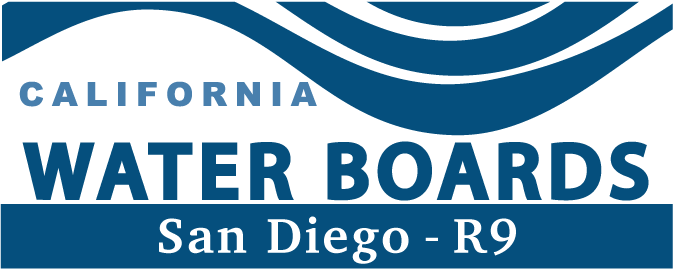San Diego Region - TMDL Fact Sheet
What is the TMDL Process?
The Total Maximum Daily Load (TMDL) process provides a flexible assessment and planning framework for identifying load reductions or other actions needed to attain water quality standards (i.e. water quality goals to protect aquatic life, drinking water, and other water uses). Clean Water Act §303(d) established the TMDL process to guide application of state standards to individual waterbodies/watersheds.
TMDLs in California are developed either by Regional Boards or by the USEPA. TMDLs developed by Regional Boards are designed as Basin Plan amendments and include implementation provisions. TMDLs must consider and include allocations to both point sources and nonpoint sources of listed pollutants. Although the abbreviation stands for "Total Maximum Daily Load," the limitations contained in a TMDL may be other than "daily load" limits. There also can be multiple TMDLs on a particular water body, or there can be one TMDL that addresses multiple pollutants.
Steps for Developing TMDLs
There are five steps in producing a TMDL:
- Involve Stakeholders: Stakeholders can be the general public, business interests, government entities, environmental groups, or anyone concerned with a particular water body. Stakeholders are involved at the beginning of the process in order to provide input to the RWQCBs on the development of TMDLs.
- Assess water body: In this step, pollution sources and amounts, or "loads," are identified for various times of the year. Then the overall effect of these loads on the water body is determined.
- Define the Total Load and Develop Allocations: To ensure water quality standards are met and beneficial uses are attained, allocations of pollutant load to all sources are established for the pollutant(s) in question. The sum of the allocations must result in the water body attaining the applicable water quality standards. Federal regulations provide that TMDLs can be expressed as mass, thermal energy, toxicity or other appropriate measures. In California, toxicity and other appropriate measures often serve as the basis for TMDLs. As watershed management efforts mature it is likely that an increased dependence on measures other than mass or thermal energy will serve as the basis for TMDLs.
- Develop Implementation Plan: This step is a description of the approach and activities to be undertaken to ensure the allocations are met and identification of parties responsible for carrying out the actions.
- Amend the Basin Plan: Federal law requires that TMDLs be incorporated into the Basin Plans. The Basin Plan is a legal document that describes how a Regional Board would manage water quality. The TMDLs must be formally incorporated into the Basin Plan to be part of the basis for Regional Board actions. Basin Plan amendments are adopted through a public process that requires approval of the TMDLs by a Regional Board, the State Board, the Office of Administrative Law, and USEPA Region 9.



